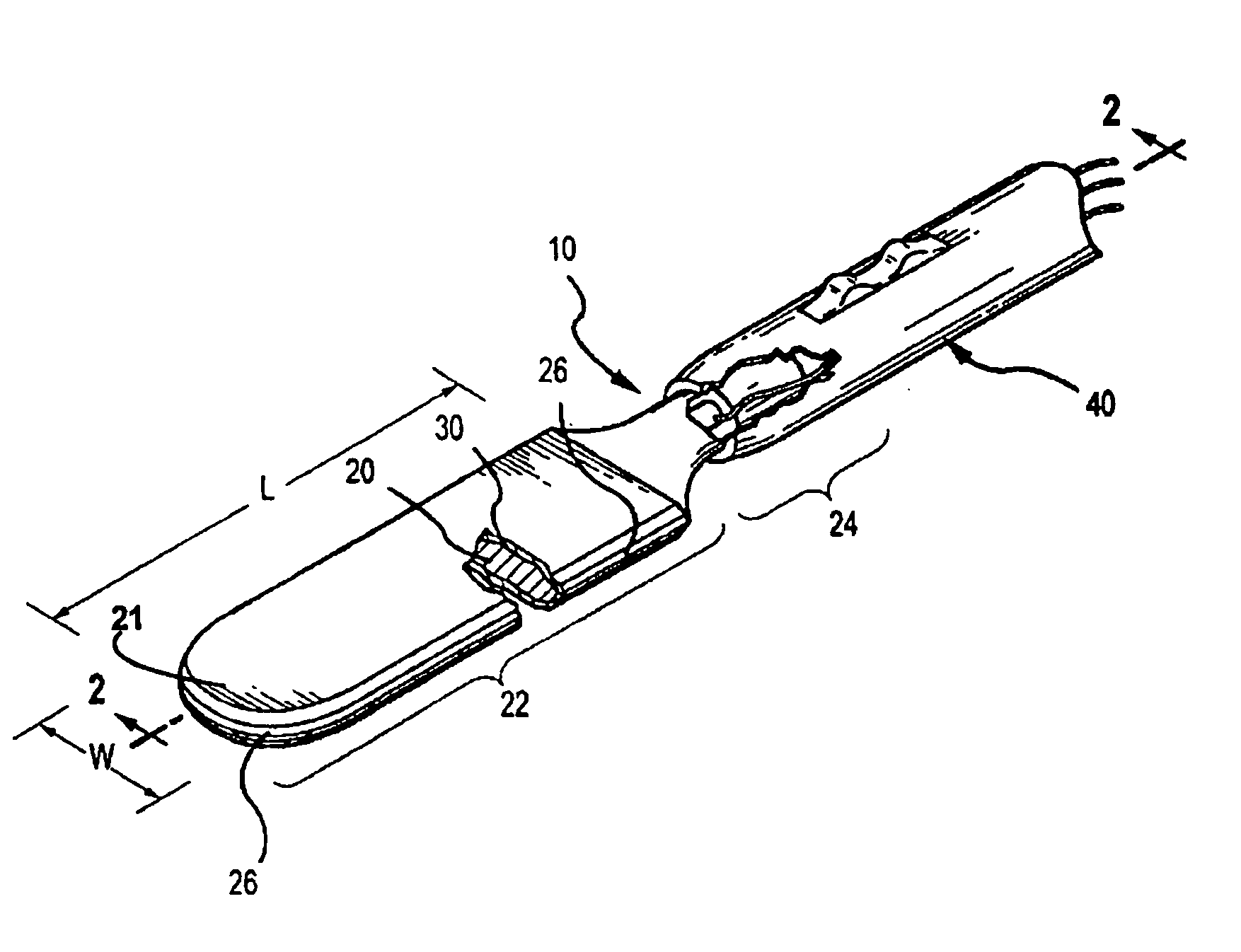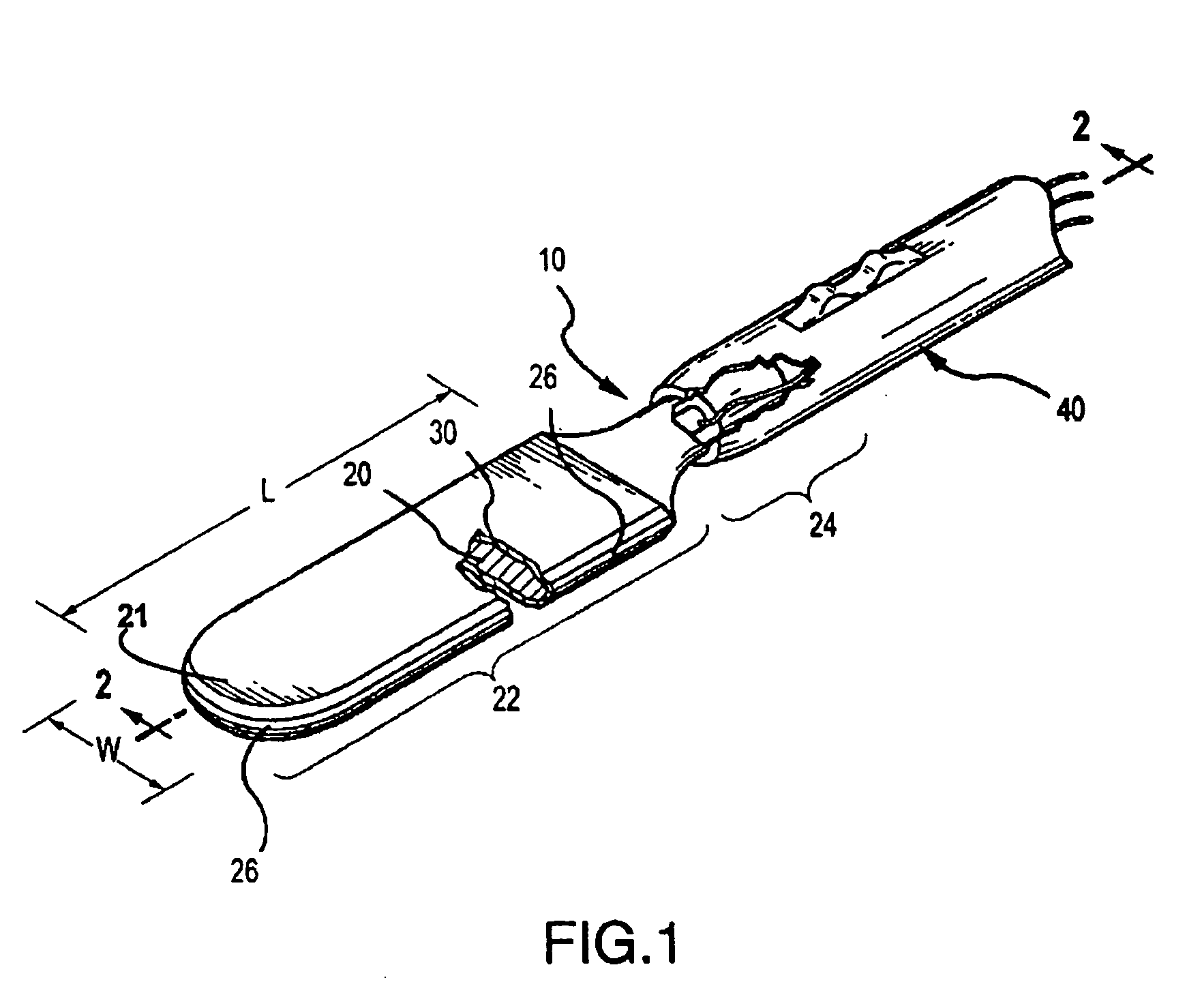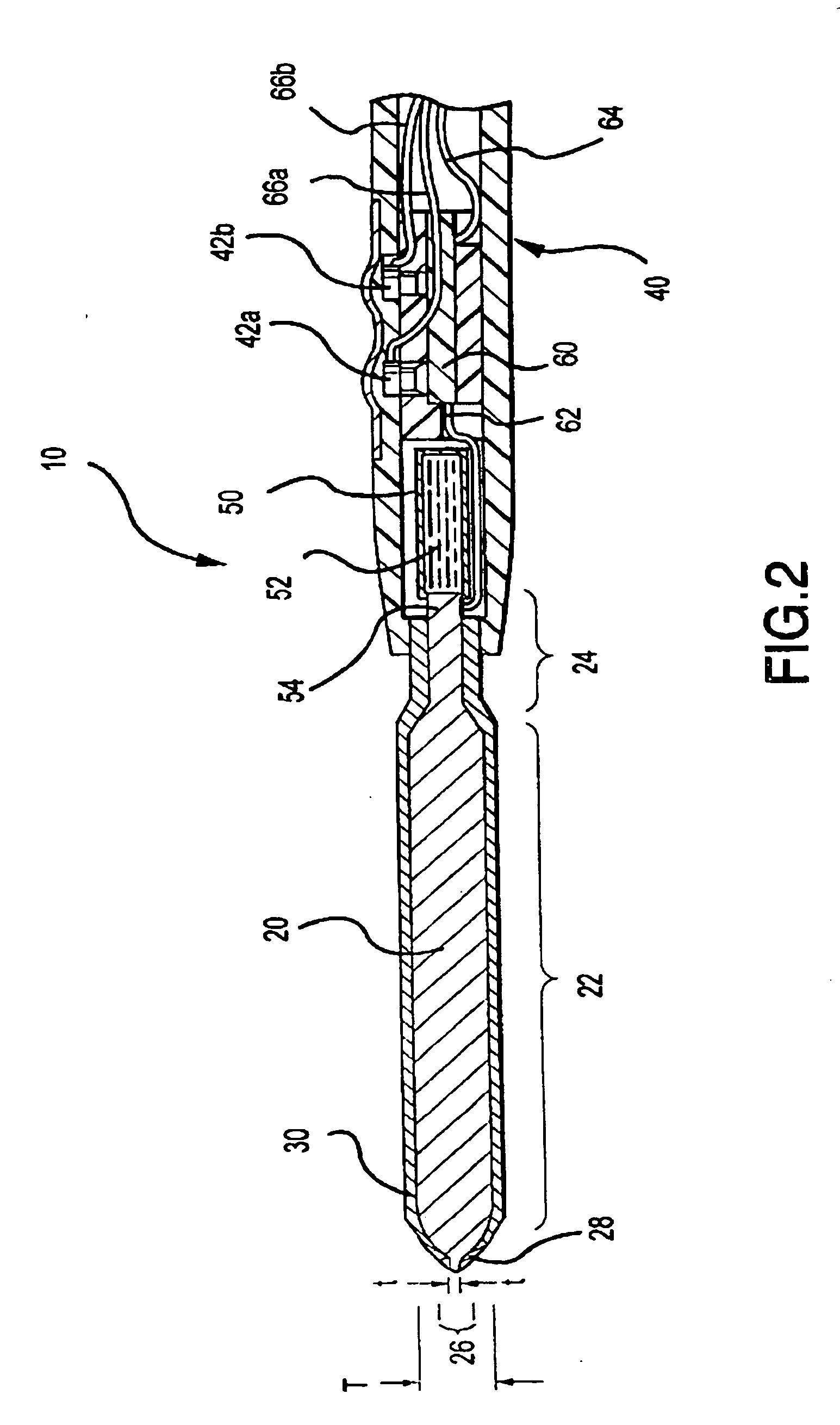Electrosurgical instrument
a surgical instrument and electro-optical technology, applied in the field of electro-optical instruments, can solve the problems of excessive heating of at least parts of the instrument, inconvenient use, and inability to meet the needs of patients, so as to reduce the generation of smoke
- Summary
- Abstract
- Description
- Claims
- Application Information
AI Technical Summary
Benefits of technology
Problems solved by technology
Method used
Image
Examples
Embodiment Construction
[0051]FIGS. 1 and 2 illustrate one embodiment of an electrosurgical instrument having a blade-like, pencil configuration. As will be appreciated, the present invention may also be readily embodied in other instrument configurations, including for example, ball electrodes and forceps.
[0052] As illustrated in FIGS. 1 and 2, the electrosurgical instrument 10 includes a main body 20 having an outer, insulating layer 30. Insulating layer 30 comprises a porous, insulating material, or coating, that has been sealed. The main body 20 includes a flattened, distally-extending blade portion 22 and a proximally-extending cylindrical shaft portion 24. The blade portion 22 has a reduced cross-section laterally outward (i.e., in cross-sectional thickness), such reduction being made either continuously, for example, by tapering, or using one or more steps, to produce a relatively thin outer peripheral edge about at least a distal tip 21 to define peripheral edge portion 26. In the illustrated embo...
PUM
| Property | Measurement | Unit |
|---|---|---|
| Temperature | aaaaa | aaaaa |
| Fraction | aaaaa | aaaaa |
| Time | aaaaa | aaaaa |
Abstract
Description
Claims
Application Information
 Login to View More
Login to View More - R&D
- Intellectual Property
- Life Sciences
- Materials
- Tech Scout
- Unparalleled Data Quality
- Higher Quality Content
- 60% Fewer Hallucinations
Browse by: Latest US Patents, China's latest patents, Technical Efficacy Thesaurus, Application Domain, Technology Topic, Popular Technical Reports.
© 2025 PatSnap. All rights reserved.Legal|Privacy policy|Modern Slavery Act Transparency Statement|Sitemap|About US| Contact US: help@patsnap.com



